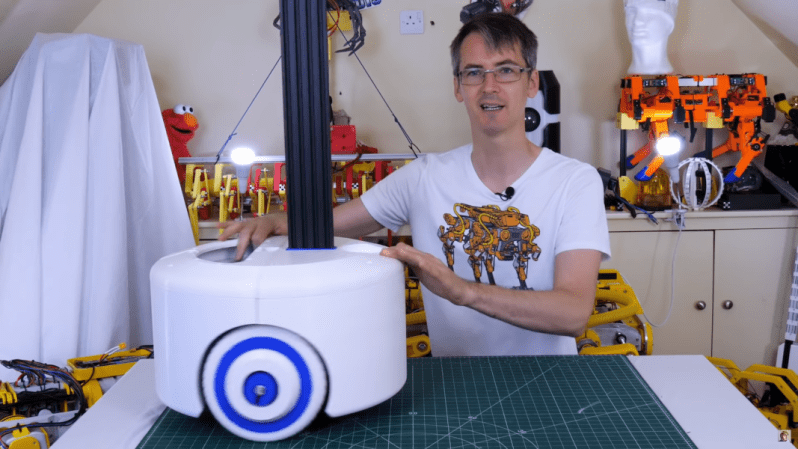[James Bruton] is an impressive roboticist, building all kinds of robots from tracked, exploring robots to Boston Dynamics-esque legged robots. However, many of the robots are proof-of-concept builds that explore machine learning, computer vision, or unique movements and characteristics. This latest build make use of everything he’s learned from building those but strives to be useful on a day-to-day basis as well, and is part of the beginning of a series he is doing on building a Really Useful Robot. (Video, embedded below.)
While the robot isn’t quite finished yet, his first video in this series explores the idea behind the build and the construction of the base of the robot itself. He wants this robot to be able to navigate its environment but also carry out instructions such as retrieving a small object from a table. For that it needs a heavy base which is built from large 3D-printed panels with two brushless motors with encoders for driving the custom wheels, along with a suspension built from casters and a special hinge. Also included in the base is an Nvidia Jetson for running the robot, and also handling some heavy lifting tasks such as image recognition.
As of this writing, [James] has also released his second video in the series which goes into detail about the mapping and navigation functions of the robots, and we’re excited to see the finished product. Of course, if you want to see some of [James]’s other projects be sure to check out his tracked rover or his investigations into legged robots.
















Since the robot will have a prominent height, perhaps lidar should be placed on the top of the mast, to be able to check for overhanging obstacles as well. Since “really useful” here means “getting its way around in human-adapted spaces”, this new requirement may be superfluous, because we usually maintain upper space clear above clear floor, but … remember our nemesis, the hanging cabinet’s doors?
Clotheslines!
Tables!
If he gets a lidar I highly recommend spinning said lidary around some non perpendicular angle. Using a small amount of transformation math you can turn a single 2D lidar into a fully 3d lidar. Downside is the robot would get a lot slower. Not sure if that matters here.
Either way things like small metal wire/chain is the death of any robot. Along with black mats, mirrors, and a few other confusing or cumbersome materials.
any examples you know of for making the 3d lidar 3d?
There is a lidar, the second part is in youtube already.
He has a nice house.
With all the colorful robots it looks like a kid’s room haha.
RUR. I see what he did there.